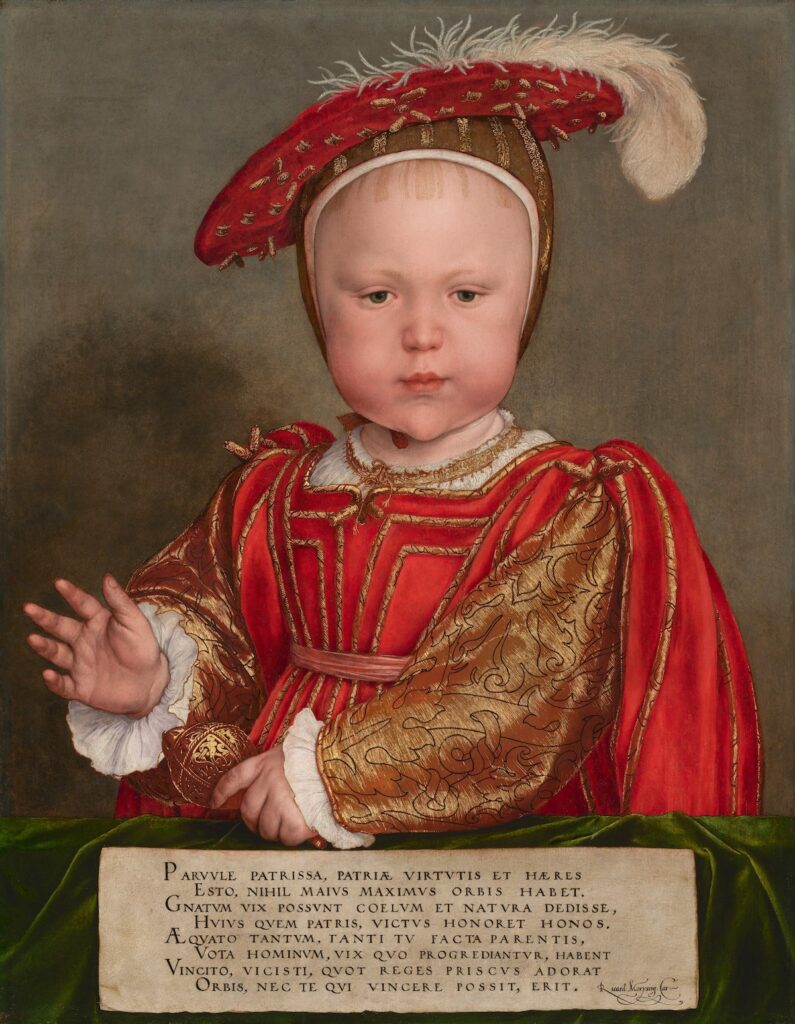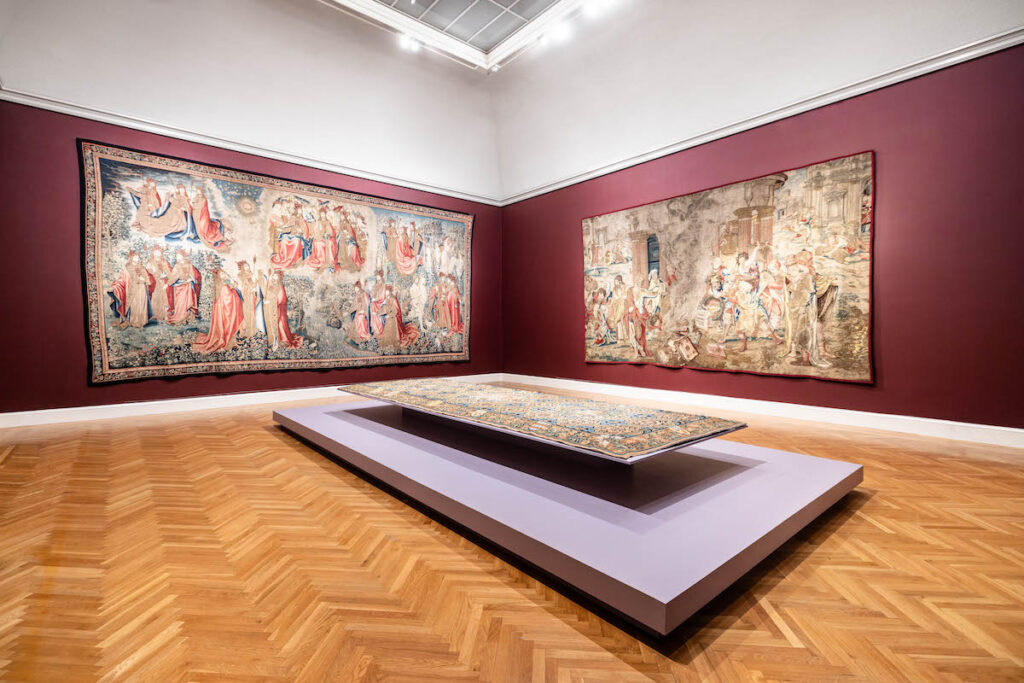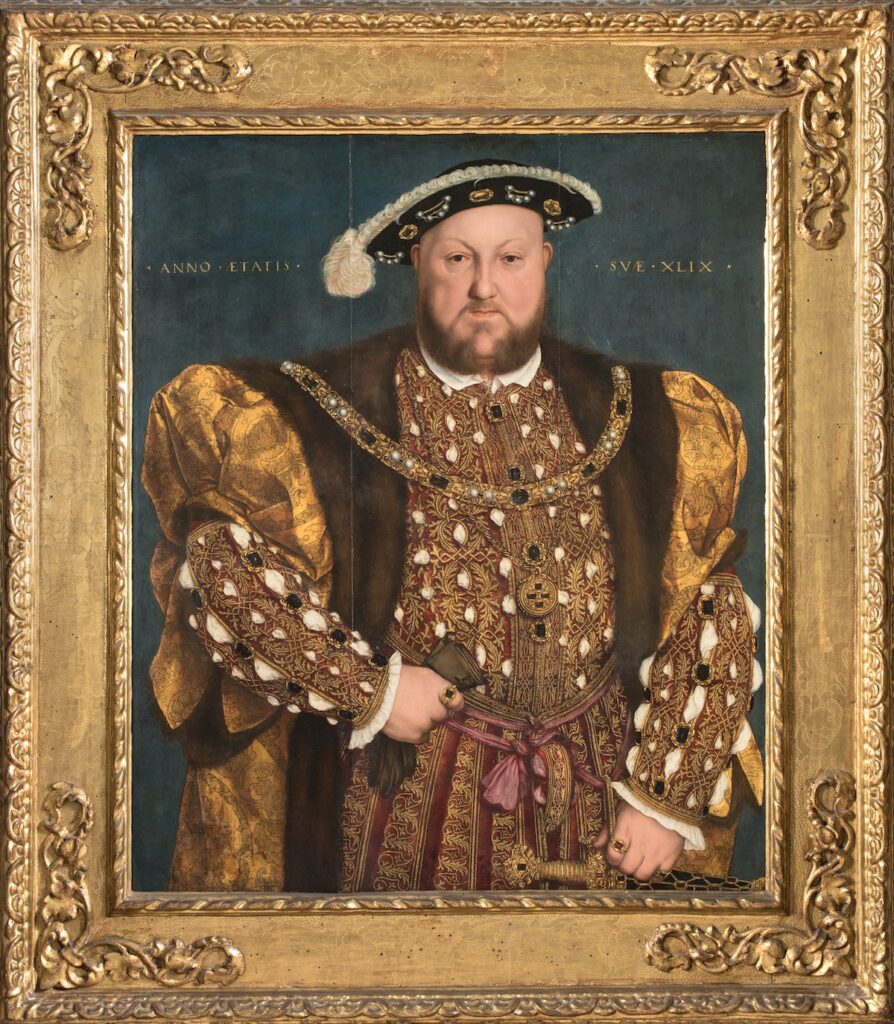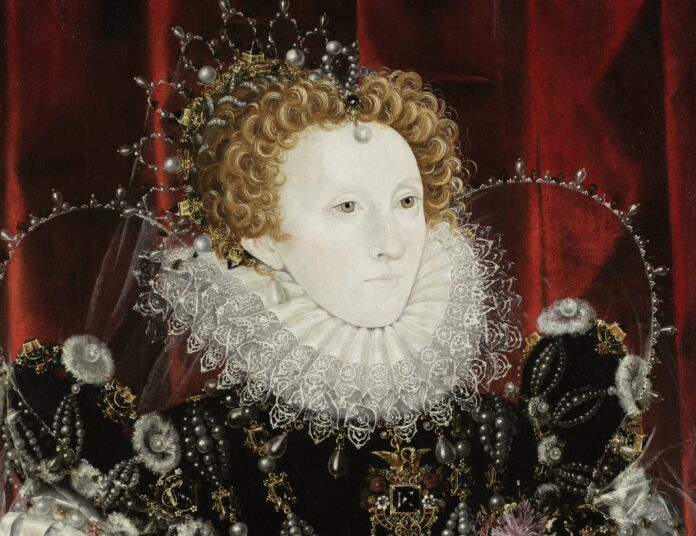We in the United States may consider ours a classless society, but US culture belies our national myth of democratic equality. So does our fascination with dynasties and royalty, whether monarchic or capitalist.
The Legion of Honor’s new treasure-trove exhibition, “The Tudors: Art and Majesty in Renaissance England” (through September 24), coming after the inauguration of Charles III and the conclusion of the popular Succession television series—based on the dynastic Murdoch media empire—is thus timely and informative, an eye-popping spectacle of luxury goods: paintings, prints, ritual vestments, tapestries, vessels, and other artifacts. Created as state propaganda to legitimize an upstart dynasty, the artifacts still gratify the eye, while providing us moderns, half a millennium later, an object lesson in how power shaped and shapes official culture.
The Tudor Dynasty began in 1485 at the Battle of Bosworth Field, with the defeat of the last of the York kings, Richard III (famously portrayed in popular literature as having a hunched back, in a precedent of politicized ableism). That battle ended the Wars of the Roses (1455-87)—a power struggle between descendants of sons of the Plantagenet Edward II: John of Gaunt, Duke of Lancaster, his side symbolized by the white rose; and Edmund, Duke of York, his side symbolized by the red rose. Shakespeare’s history plays—Henry IV, Henry V and Henry VI—detail the fratricidal conflict, with Richard III ’s villainy contrasting with the current enlightened patroness of the arts, Elizabeth I.

Henry Tudor, eventually crowned Henry VII, was not in fact of the York line, but of the lowborn Welsh Tudors, one of whom had become the secret husband of the young widow of Henry V. Henry legitimized his reign as the de-facto head of the York side by marrying Elizabeth of York, and uniting the Lancastrian and York roses into the composite Tudor rose. Succeeding Henry (reigned 1485- 1509) were his son, Henry VIII (r. 1509–47), and then Henry VIII’s three children, Edward VI (r. 1547–53), Mary I (r. 1553–58), and Elizabeth I (r. 1558–1603).
The exhibition, which originated at the Metropolitan Museum of New York, was curated by European art specialists Elizabeth Cleland and Adam Eaker, and comes to San Francisco in a somewhat abbreviated form due to COVID and insurance factors that came into play after 2020. While it is large, it is not exhaustingly so; furthermore, the show is laid out chronologically rather than thematically, one or two galleries per monarch, making it easy to negotiate without time-tripping mental gymnastics.

In the catalogue’s introductory essay, Cleland and Easter note the relative backwardness of English art at the time: “When it comes to the visual arts, the English have a long- standing tradition of national self-deprecation. Writing at the end of the Elizabethan era, Richard Haydock lamented that the art of painting ‘never attained to any great perfection amongst us.’ Almost two centuries later, Horace Walpole apologetically prefaced his Anecdotes of Painting in England by acknowledging that its ‘chief business . . . must be to celebrate the arts of a country which has produced so few good artists.’”
The most accomplished paintings in the exhibition are Hans Holbein’s the Younger’s portraits of Jane Seymour, Henry VIII’s third wife, in 1536-7; her son, the young Edward VII, as a regal two-year-old princeling, in 1538; and the young German nobleman and humanist, Hermann von Wedigh III, in 1532; all three are masterpieces of detailed observation and human sympathy. Mention should also be made of a 1540 full-length portrait of Henry by Holbein’s workshop, capturing the young monarch’s outsized personality, every inch a king, for good and ill.

As for dissident side, Paolo Torrigiano’s 1510-15 polychromed terra cotta bust of John Fisher, the ascetic Bishop of Rochester, beheaded in 1535 for refusing to recognize Henry VIII as head of the Church of England, is a tour de force of sympathetic realism.
Homegrown English talent, working from a more conceptual, decorative aesthetic, produced striking works as well: Nicholas Hilliard’s iconic, bejeweled 1576-8 portrait of Elizabeth I captures the Virgin Queen as national symbol; and George Gower’s earlier 1567 portrait portrays the young, fashionable (and supposedly marriageable) Elizabeth as a paragon of female virtue and fecundity.
Those who might enjoy a deep dive into English Renaissance culture—and the human stories behind the artifacts— can delve into the scholarly catalogue, which traces the myths and symbols of Catholic and Protestant culture in England and the Continent (from which a prosperous England imported the best artistic talent); the role of religion at this crucial period; and, as always, the role of strategic marriages between members of transactional ‘frenemy’ aristocratic families.
THE TUDORS: ART AND MAJESTY IN RENAISSANCE ENGLAND runs through September 24 at the Legion of Honor, SF. More info here.




